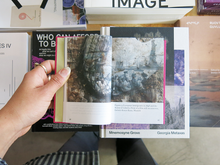
In The Dragonfly’s Eye, 92-year-old author and filmmaker Alexander Kluge tests out the cooperative capacities of the Stable Diffusion model, which uses AI to process images. As a film-maker, he has many years of experience in dealing with the camera and its ways of seeing, which are unlike how a person sees. As a result, he is particularly curious about the different images that AI can generate. Kluge’s essay in the book reflects on the idiosyncrasies of these new types of images, in which chance factors and errors create subjunctive forms, resulting in open images that are hard to place. Kluge establishes rules for using the 'virtual camera' and thus contributes to a debate on how AI should be handled. In a series of stories combining images and text—ranging from cases of phantom pregnancy in East Germany via Philemon and Baucis to the mercenary Yevgeny Prigozhin—he examines how the 'virtual camera' opens up a space in which stories can be told and imagined in a new way.
480 pages, 9 x 14 cm, hardcover, Spector Books (Leipzig).


















